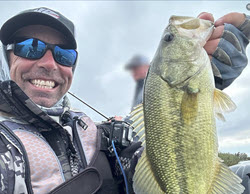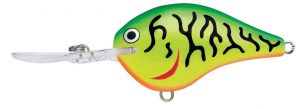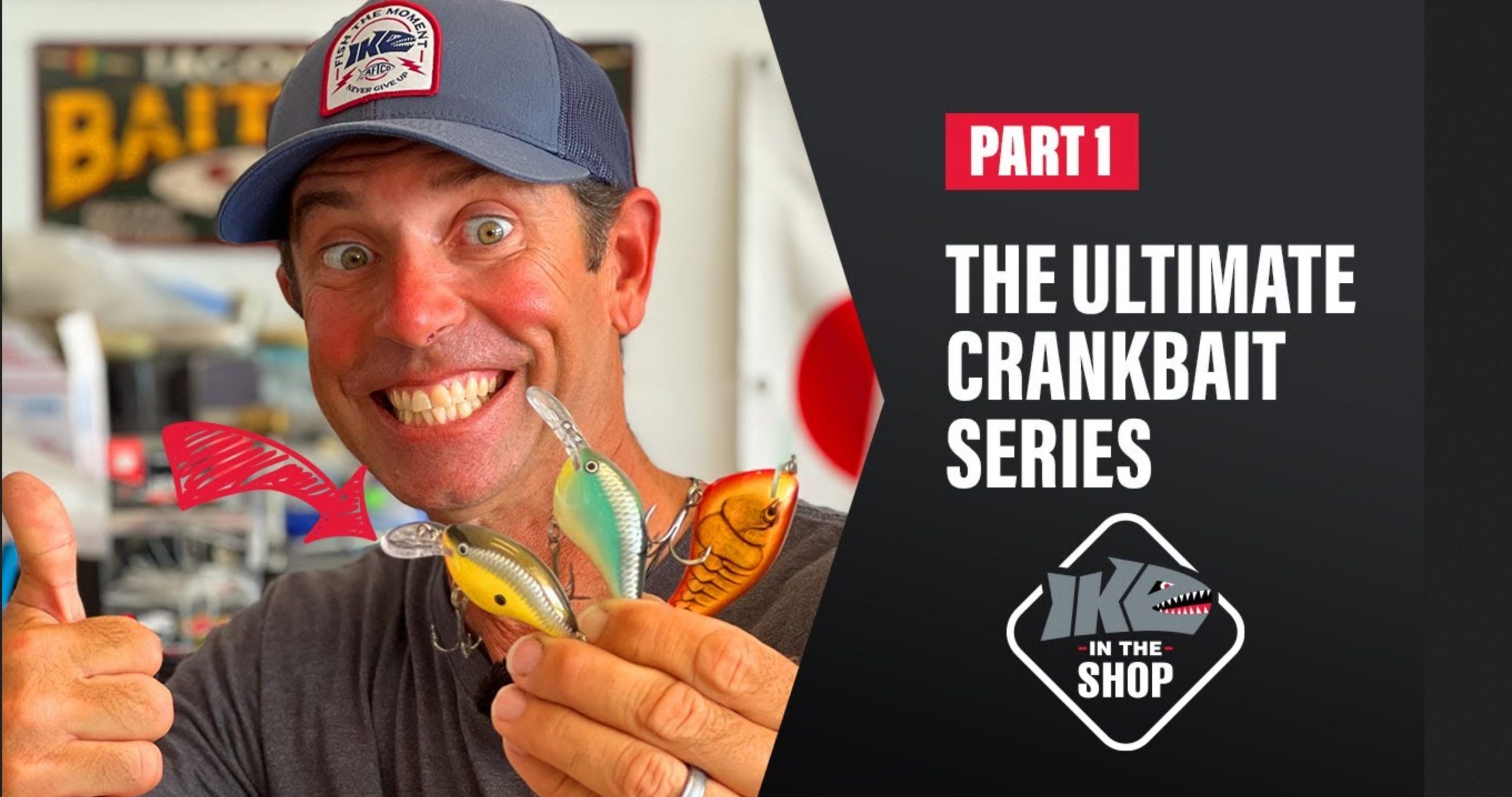
When I look back at some of my greatest successes in my tournament career, a lot of them are directly attributable to crankbaits. Why are they so good? The biggest reason is their ability to get bites from fish that are feeding as well as fish that are not actively feeding. Sure, a lot of baits will produce “hunger bites,” but the ability to trigger reaction bites puts them in a different class.
So what are we talking about when we use the term crankbait? It’s a lure, made of wood, plastic or resin, that has a bill that helps it to dive. When water hits that bill, it wants to dig. The other critical aspect is that they wobble. That side-to-side, back-and-forth movement can make a huge difference. Picking the right one is critical to getting the right bites.
I break down wobble into three basic categories. While I use Rapala lures mostly, the same principles apply no matter what brand you use. You should always tailor the wobble to the combination of water temperature, water clarity and fishing pressure. There are tight wobbling lures, moderate wobbling lures, and wide wobblers.

The tight wobbling crankbaits are probably the most underfished. They tend to be thinner-bodied baits. One of the most famous is the Rapala Shad Rap. They also have thin, almost inline bills. They’re usually best in cool or cold water – that’s a relative term depending on where you live. They’re also most effective in clean or clear water. It’s the finesse worm of crankbaits. Finally, if the fish are not eating, possibly because of a cold front or fishing pressure, that’s when these lures get the call.

When you look at a moderate wobbling crankbait, like the Rapala DT series, they’re not flat. They have a little bit wider body than the tight wobblers. There’s also a little bit of slope to the bill. Their middle-of-the-road characteristics means they’re pretty good year-round, in a wide range of conditions, but they’re at their best when conditions are also moderate. That means the water is not the hottest or the coldest. Usually I like the in 60 to 70 degree water. They’re also my choice when it isn’t crystal clear. Instead, the water has a little bit of color, but it’s not dirty or chocolatey. They often have a subtle rattle that helps the fish figure out their location. Finally, I like them when fish are exercising a moderate activity level and there’s moderate fishing pressure.

Last but not least, you have the wide wobbling crankbaits like the Rapala DT Fat or BX Brat. AS the body gets fat and the bill gets thicker and more angled, those are signs that the crankbait has a big side-to-side wobble. You can really feel it through the tip of your rod. They often have loud rattles, too.
I like these lures when the water is at its hottest point of the year – 70 degrees all the way to 100. The hotter the water, the wider the wobble. They also excel when the water is dirty. It could be after a big rain or a major algae bloom, or just dark conditions. The wide wobble and loud noise help the fish find the lure. Keeping with the trends, you’re probably not surprised to learn that these are at their best when you have active fish and/or little or no fishing pressure.

Once you choose the proper wobbling profile, you have to pick the right size and color for your lures. If you’ve followed my channel for any period of time, you know that the ultimate factor in the way I choose these attributes is the need to “match the hatch.” You want to replicate what the bass are feeding on naturally in the environment. There are hundreds of different crankbaits colors out there, but in my opinion you can narrow them down to three main categories.
The first is crustaceans like crawfish. When fish are feeding on crawfish, use crankbaits in browns and beiges and tans and reds, especially in the spring. Do some research on the web or turn over a few rocks to see the color and size of them in your local waters.
The second category encompasses baitfish. These might be shiners or shad or alewives or herring. That means you’ll want some whites and silvers and pearls. Dial those in to your local forage, too.
Finally, my third color category is panfish, which of course includes sunfish and bluegills and shellcrackers, but I also throw in yellow perch. That demands various shades of yellow and chartreuse and olive, and perhaps some orange on the throat. See, it doesn’t have to be complicated or expensive.
As you fine tune your colors, remember to consider water clarity, too. My general rule is that the clearer the water, the smaller the bait and the more natural the color. The opposite is true in dirty water.
In order to make the best use of your diving crankbaits, you have to utilize the right retrieve. There are two basic scenarios: The first is that you throw out your lure and hit something, usually either a piece of cover or the bottom. The second is that you throw into open water and don’t hit anything – not cover, not the bottom. In each case, though, you want to retrieve that lure so that it changes direction. That’s the biggest key besides wobble.
When you’re hitting something, the object makes it change direction. But what if the bass are suspended 6 feet deep over 12 feet of water? When you’re unable to hit something, you don’t want a steady, moderate retrieve. Instead, utilize changes in reel speed and rod position to make some sort of change of direction happen.
I hope you are enjoying this series. I’m trying to provide an “A to Z” approach to crankbaits. Next time we’ll discuss how to dial in your rod, reel, and line to maximize your effectiveness.

Like Ike on Facebook, and follow him on Instagram and TikTok for fishing and fun content.
Subscribe to Mike’s YouTube channel, to ensure you see every adventure video. (Download the YouTube app on your phone and the videos will come to you automatically.)
Return to Mike Iaconelli’s website
